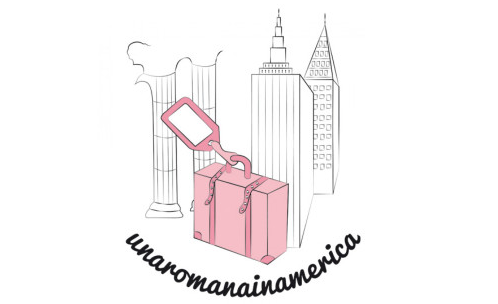“Chi progetta sa di aver raggiunto la perfezione non quando non ha più nulla da aggiungere ma quando non gli resta più niente da togliere.”
(Antoine de Saint-Exupery)
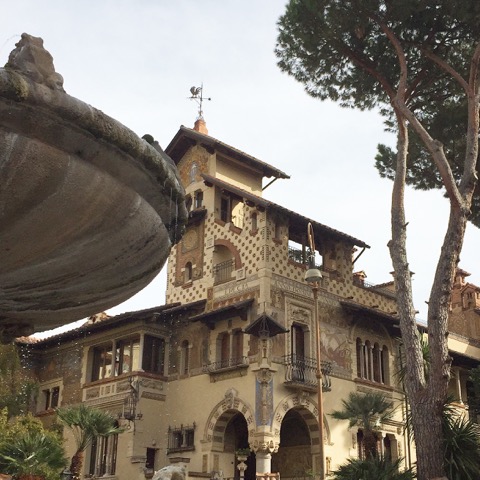
Chi mi segue da un po’ avrà forse capito che sono una che si ritrova spesso con la testa per aria e con gli occhi che le restano appiccicati a quello che si ritrova davanti. Adoro le abitazioni, gli edifici, i monumenti, il modo in cui una comunità si è espressa nelle varie epoche, dove ha deciso di abitare, di creare la sua società, di esistere. E come farlo.
Ecco che ogni volta che passeggio nel paese in cui vivo m’incanto a immaginare un’età che non c’è più, ma che vive a suo modo nel tempo e conferisce all’ambiente circostante quel fascino caratteristico tipicamente suo, che, seppure assomiglia anche solo un po’ a un altro, appartiene unicamente a se stesso. Vi ho già mostrato Allentown e le sue case vittoriane e coloniali, vi farò conoscere altri luoghi che amo quando se ne presenterà l’occasione, Sabrina ci porterà presto a fare una passeggiate tra quelle case tipiche della Baviera (non so se potevo anticiparvelo, voi fate finta di non sapere niente, ok? SHHH, mi raccomando!) e oggi invece andiamo a Roma, che non ha davvero niente da invidiare al resto del mondo. Anzi. La bellezza della città eterna sta anche nella sua varietà architettonica. Questa volta Francesca Cavallari, mia amica, romana di adozione, conosciuta nel web come @francycava , e viandante per un giorno nel mio blog, ci porta a fare una passeggiata in una parte della città, nota proprio per l’architettura unica al mondo. Sto parlando del quartiere Coppedè. Forse per molti, romani e non, ha solamente un valore di bellezza architettonica, alcuni magari non ci hanno neanche mai messo piede, ma per me questo luogo ha anche un valore sentimentale. Dopo la zona in cui sono nata e cresciuta, questa è forse la parte di Roma in cui ho passato la maggior parte della mia vita. Ho tantissimi ricordi legati a questo luogo che se dovessi raccontarveli finirei forse per annoiarvi e per coprire il volto di lacrime e sorrisi. Nostalgia. Magari un giorno lo farò. Forse. Ora però tocca a Francesca portarci in questo posto. Vediamo cosa ha da raccontarci.
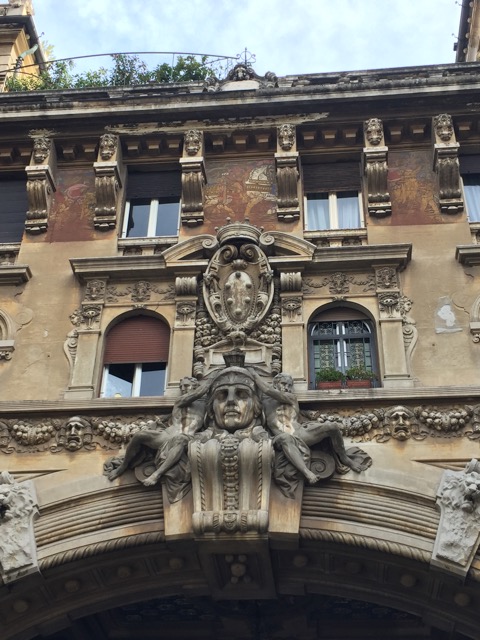
Passeggiando per il centro di Roma, tra i viali inalberati e le piccole strade poco frequentate del quartiere Trieste, è possibile trovare un tesoro architettonico unico nel suo genere: il quartiere Coppedè. Se si desidera scappare per un attimo dalla frenesia della città per immergersi in un sogno, questo è il luogo ideale. Al tramonto regala sicuramente un’atmosfera fiabesca e misteriosa ed è un posto perfetto per chi crede nei simboli esoterici e massonici.
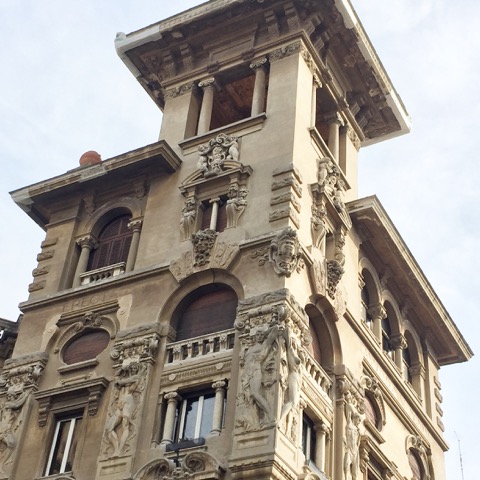
Un complesso di diciotto palazzi e svariate palazzine progettate e realizzate tra il 1915 e il 1927 dall’architetto eclettico Gino Coppedè, da cui il quartiere prende il nome. Un luogo, questo, che suscita molte emozioni, che conferisce a Roma, sicuramente, un aspetto bizzarro ed inaspettato, dove il mix di arte Liberty, art Decò ed evidenti stili dell’arte greca, barocca e medioevale, crea qualcosa di unico ed inestimabile. L’ingresso è caratterizzato da un grande arco, che congiunge i due palazzi degli ambasciatori, dal maestoso lampadario in ferro battuto e dalla volta impreziosita con elementi mosaici e pittorici. Sul lato di uno di questi palazzi è presente la bellissima statua della Madonna con Bambino, materna e rassicurante.
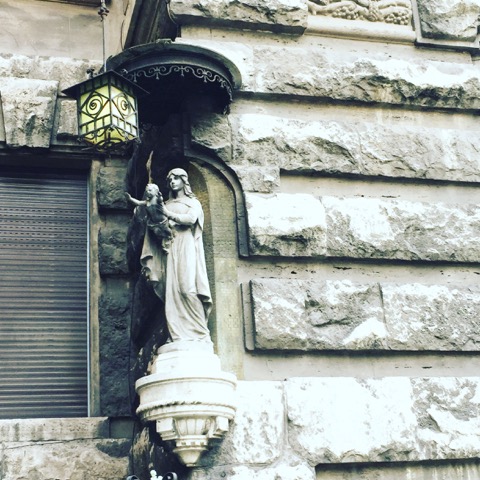
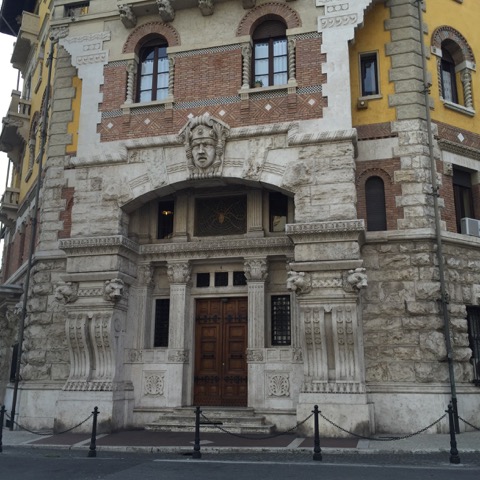
Da qui verrete condotti in Piazza Mincio, nel cui centro si trova la bellissima Fontana delle Rane, imponente, popolata da 12 rane e famosa anche per il bagno che i Beatles vi fecero dopo un concerto tenuto al Piper, la celebre discoteca che negli anni ‘70 era sinonimo di libertà e rivoluzione. Sulla piazza si affacciano differenti fabbricati e i più famosi sono la Palazzina del Ragno e il Villino delle Fate, entrambi con caratteristiche architettoniche e strutturali molto particolari e con stili di influenza orientale e liberty. Queste costruzioni rappresentano l’apice del lavoro di Coppedè. I tre edifici indipendenti sono un omaggio alle tre città più importanti d’Italia, Roma, Firenze e Venezia, e rappresentano un inno, un elogio alla storia italiana.
Questo luogo cosi particolare e fantastico ha ispirato da sempre il cinema. Il grande regista horror Dario Argento qui diresse i suoi più famosi film, “Inferno” e “L’uccello dalle piume di cristallo”, ma anche scene di altri lungometraggi hanno trovato nel quartiere la giusta location, ad esempio “Il profumo della signora in nero” di Francesco Barilli, “Ultimo tango a Zagarolo” di Nando Cicero e “Audace colpo dei soliti ignoti” di Nanni Loy con Vittorio Gassman.
Ed è forse in questo particolare momento storico in cui la società sta perdendo i valori di convivialità, condivisione e rispetto, che trovo molto intenso e attuale il motto che questo architetto ci ha voluto donare, presente sul palazzo Hospes Salve: “Ingredere has aedes quisquis es; amicus eris. Hospitem sospito”, “Entra in questa casa, chiunque tu sia: sarai un amico. Io proteggo l’ospite”.
Vi auguro una fantastica passeggiata, fatevi conquistare dalle meraviglie di Roma!
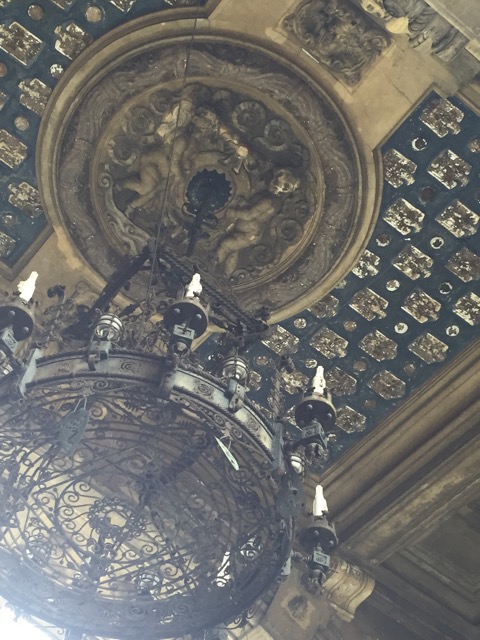
Ringrazio Francesca per le sue foto, i suoi racconti e per averci fatto camminare virtualmente in un luogo così interessante e peculiare. Sarà poi che ci sono passata tante di quelle volte, anche di notte, in quelle strade, che quelle creature di fantasia, in marmo e travertino, che ti osservano dall’alto, con fare minaccioso, a me ragalano invece la protezione e il calore di un luogo che mi conosce.
A presto,
Alessandra (e Francesca)
Se sei anche tu di Roma, di nascita o adozione, ti piace scrivere e fotografare e vuoi raccontare una storia, un luogo, una tradizione della città eterna, scrivici all’indirizzo email 1romausa@gmail.com
Diventa anche tu “viandante per un giorno“.
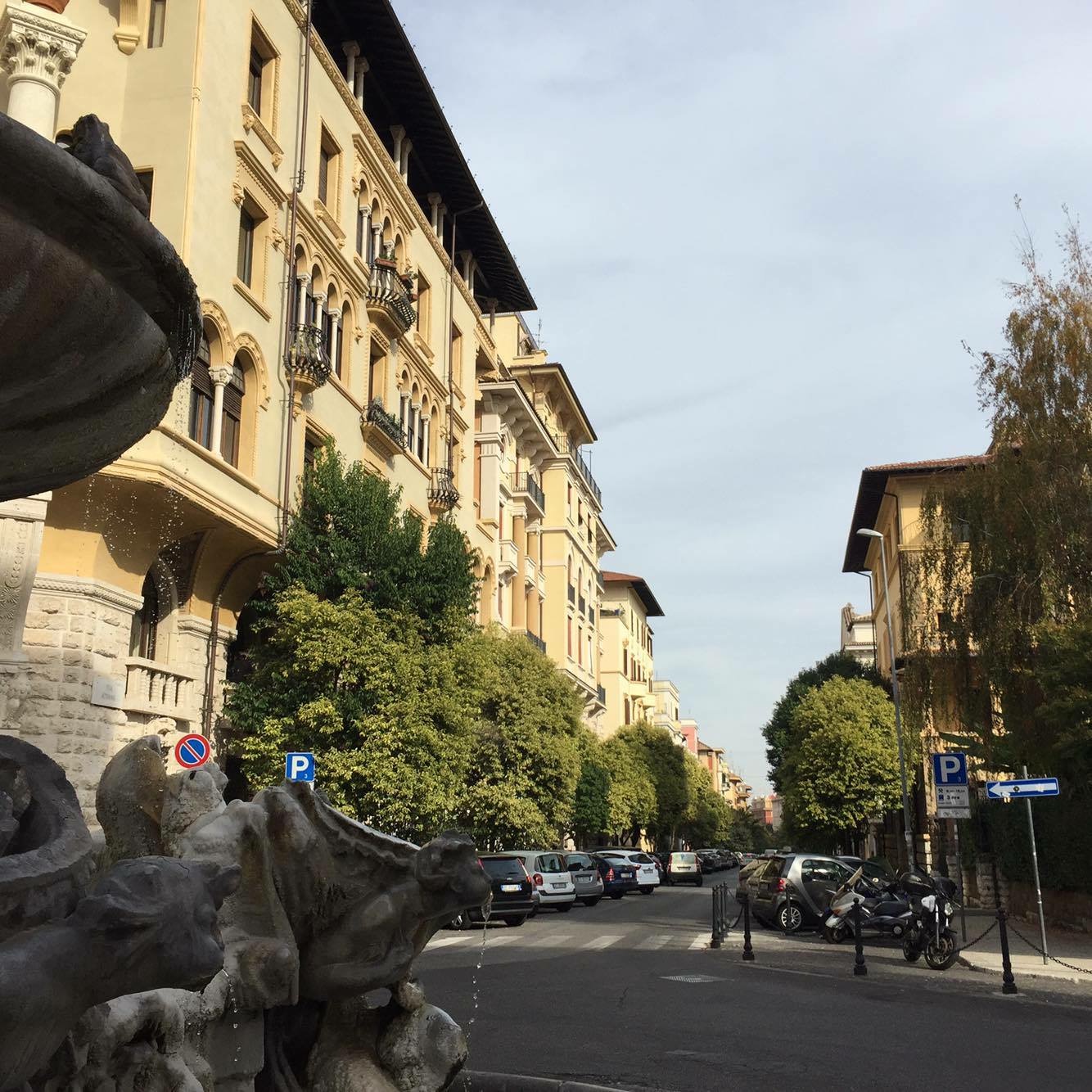
“Perfection is achieved, not when there is nothing more to add, but when there is nothing left to take away.”
(Antoine de Saint-Exupery)
Those who follow me know that I’m one of those people who walk looking around and whose eyes get stuck in everything. I love houses, buildings, monuments, which represent the way a community expressed itself during the time, how they decided to settle down, to create a society, to live. Everytime I have a walk in the town I live, I think back to an era which doesn’t exist anymore, but still lives in the present and gives to the surrounding places a particular fascinating aspect. I’ve already talked about Allentown and its Victorian houses, and I would like you to know other places I love. Sabrina too will take us for a walk through the typical Bavarian houses (ops, maybe it should have been a surprise… You don’t know anything, ok?) but today we go to Rome, one of the most beautiful cities in the world. The beauty of the “Città Eterna” lies also in its architectural variety. We are with Francesca Cavallari, a friend of mine, an adopted Roman, who takes us for a walk in a part of the city which is famous for its unique architecture. I’m talking about the Coppedè district. Maybe, for a lot of people, Roman people and not, this is only an interesting district from the architectural point of view, maybe they have never gone there. For me, this place is important, it has a sentimental value. After the district where I was born and lived, maybe this is the place where I spent most of my life. I have a lot of memories in the Coppedè district…should I talk about this, I’ll become boring, maybe. Perhaps one day I’ll talk about this, but now it’s up to Francesca… Let’s see what she wants to tell us.
Walking through the center of Rome, in boulevars with trees or small and almost desert streets of the Trieste district, you can find a unique architectural treasure: the Coppedè district. If you want to run away from the frenzy of the city center, this is the perfect place. At sunset the atmosphere is magic and this is the perfect place for those who believe in esoterism.
The district is made up of 18 palaces and other buildings built by the architect Gino Coppedè between 1915 and 1927. This is an odd and bizarre place of Rome, where the mixture of different styles such as Liberty, or Decò and greek, baroque and medieval art creates something unique, whose value is inestimable. The entrance is made up of a big arch, which joins the ambassadors’ palaces, by a majestic iron chandelier and by a vault decorated with paintings and mosaics. On one side of one of these palaces, you can find the wonderful statue of the Virgin Mary and the baby Jesus, maternal and reassuring.
Then, you can go to Piazza Mincio, where you can find the wonderful Fontana delle Rane, majestic, made up of 12 frogs and famous because here the Beatles took a bath, after holding a concert at Piper, the famous night club of the 70’s, symbol of freedom and revolution. In the square you can find various buildings, and the most famous are the Palazzina del Ragno and the Villino delle Fate, very particular buildings from an architectural point of view, where eastern and Liberty styles and influences live together. These buildings, which represent the culmination of Coppedè work, are tought like an homage to the three most important cities of Italy: Rome, Florence and Venice. They are like a celebration of Italian history. This beautiful and fascinating place has always been a source of inspiration for the cinema. The great director Dario Argento shot here his famous “Inferno” and “L’uccello dalle piume di cristallo”, but this place proved perfect for other scenes of famous features such as “Il profumo della signora in nero” by Francesco Barilli, “Ultimo tango a Zagarolo”by Nando Cicero and “Audace colpo dei soliti ignoti” by Nanni Loy with Vittorio Gassman.
Maybe in this historical moment, when society is loosing values such as respect, the joy of sharing and spending time with other people, I think that the motto the architect leaves on one of the buildings is full of significance: “Ingredere has aedes quisquis es; amicus eris. Hospitem sospito”, “Come in, never mind who you are, you will be a friend. I host the guest”.
Have a nice walk, fall in love with Rome.
Thank you Francesca for your photos, for your words and for guiding us through a very interesting place. I passed several times in those streets and those creatures, made of marble, which look at you and seem threatening, made me feel the protection and the warmth of a place which knows you well.
See you soon,
Alessandra (and Francesca)
If you live in Rome, if you was born in Rome or you have been adopted by the city, if you like writing or taking pictures of Rome and its traditions, write to 1romausa@gmail.com
Become WAYFARER FOR A DAY!
Traduzione a cura di Chiara Ferri
Traslated by Chiara Ferri
